Ukraine Situation Report: Bloody Battle For Key Fishing Village May Soon Be Over
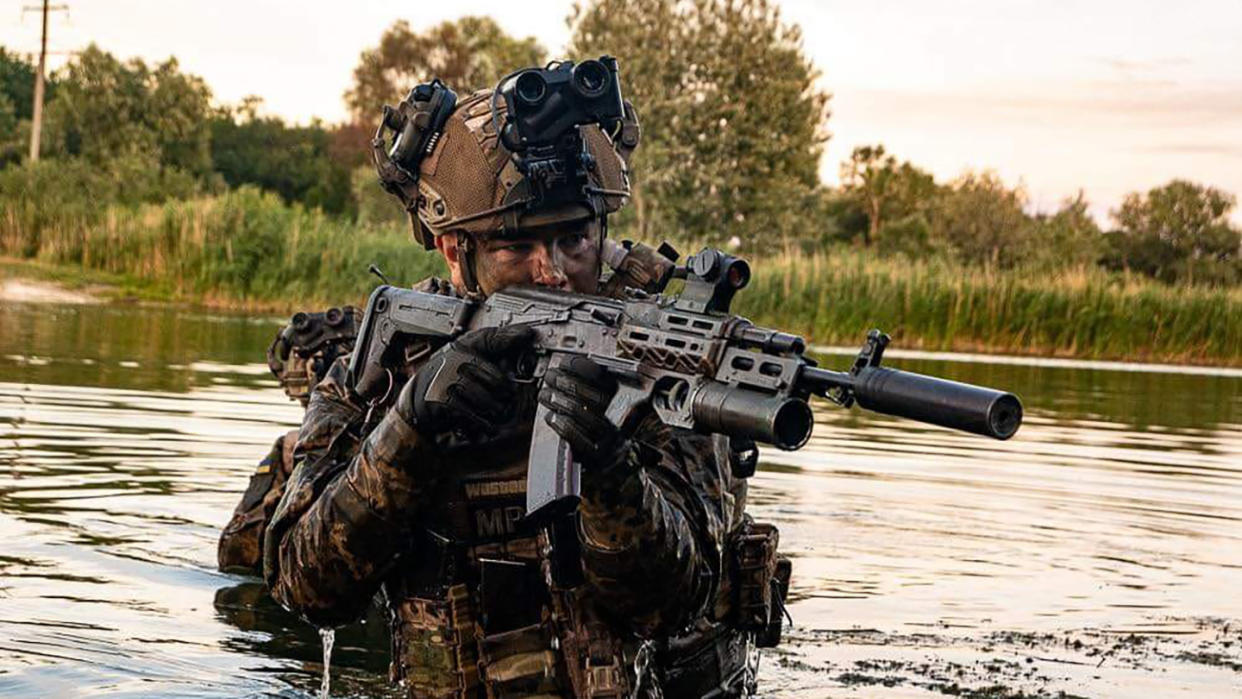
After nearly a year, the bloody battle for Krynky grinds on, though for how much longer is increasingly in question.
Since October 2023, the two sides have squared off in a fight for the strategically important village, which sits 30 km (about 19 miles) west of Kherson City and 2 km south (about 1.2 miles) of the Dnipro River in Russian-occupied Kherson Oblast. It is part of a larger effort across the Dnipro River and its islands to tie up Russian troops and resources and, in theory, potentially retake the rest of Kherson. From where Ukrainian forces could push south toward occupied Crimea.
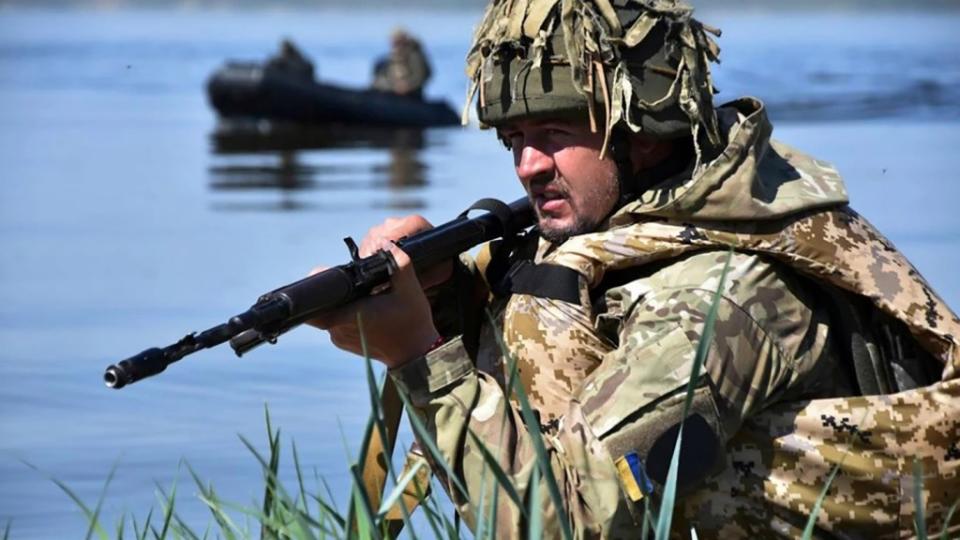
Ukrainian Marines
However, it is hard enough to move in mass across open plains with plenty of room to maneuver and terrain better suited for heavy vehicles. Fording the third-of-a-mile stretch of the Dnipro River and then pushing through the swampy, vegetation-choked area surrounding the village with a large force would have proven nearly impossible given the heavy presence of Russian artillery and drones that would have shredded any large-scale attempt to cross. So instead, the fight for Krynky – partially held by a small force of Ukrainian Marines – devolved into a deadly slog of attrition. The biggest measure of success for Ukraine has been the large number of Russian troops and equipment destroyed to hold the line.
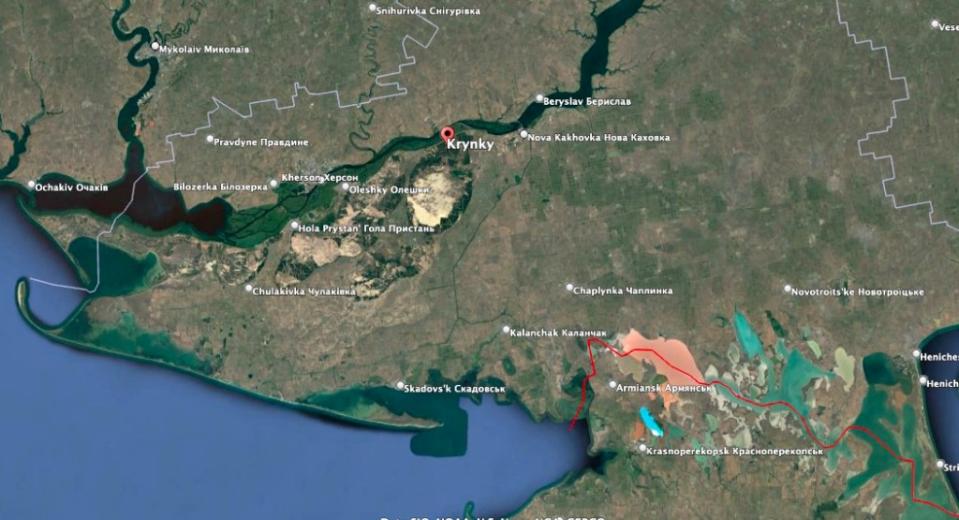
There are now conflicting reports about the status of this battle, though the consensus seems to be that it will not likely go on much longer.
“The Defense Forces of Ukraine continue to carry out combat missions on the left bank of the Dnipro, particularly in the area of the settlement of Krynky,” the Defense Forces of Southern Ukraine said in a post on Facebook. “However, really most of the main positions of the Ukrainian troops in the village of Krinky as a result of the intense, combined and lasting enemy fire influence, were destroyed in vain. It should be added that the village is also practically completely destroyed by enemy shelling.”
“At the same time, Ukrainian defenders continue to occupy designated positions and [enclaves] on the left bank of the Dnipro, destroying the occupiers and inflicting tangible losses to the Russian army.”
After reports of a Ukrainian withdrawal from Krynky, the Defense Forces of Southern Ukraine just released a statement.
Fighting is ongoing but "it is true that most of the main positions of the Ukrainian troops… were completely destroyed."https://t.co/5CNl1qu9fP— Chris York (@ChrisDYork) July 17, 2024
Other accounts are less rosy, suggesting that Ukraine withdrew from the one-time fishing village of 1,000 residents weeks ago.
“Earlier, the publication Liga.net, citing sources in the General Staff, also reported the departure from Krynky in the Kherson region and Harvest in Donetsk region,” the Ukrainian Suspline news outlet reported on Tuesday. “In both settlements, maintaining positions no longer made sense because of the large-scale destruction, and the Defense Forces withdrew to save the lives of fighters.”
Multiple Ukrainian media outlets report that Ukrainian forces withdrew from Krynky on the left bank of the Dnipro several weeks ago.https://t.co/6euuTZgGoOhttps://t.co/BUEdPu0zaZhttps://t.co/ot1XnHbmSR
— Rob Lee (@RALee85) July 16, 2024
Ukraine has paid a heavy price for the battle of Kyrnky according to the Ukrainian Slidstvo.Info news outlet.
In a story titled “I saw hell, and I called it ‘Krynky,’” the publication reported that “788 men are wanted as officially missing there between October 2023 and the end of June 2024. At the same time, the number of dead soldiers who managed to be removed from there and eventually buried is much smaller – 262 defenders during this period.”
Tough article about the battle for Krynky by @StankoNastya. Ukrainian marine and TDF brigades who fought there sustained 262 KIA whose bodies were recovered and another 788 are MIA.https://t.co/8rAGJ2NuPN
— Rob Lee (@RALee85) July 17, 2024
The Kremlin-connected Rybar Telegram channel is taking great pleasure in all this.
“The Ukrainian command used its own operational reserve in the form of marine brigades for slaughter,” Ryber wrote on Wednesday. “On the other hand, the Ukrainian Armed Forces have repeatedly undertaken similar operations in order to obtain a powerful media effect at absolutely any cost, so they will obviously do this again more than once.”
Before diving into more developments from the conflict in Ukraine, The War Zone readers can review our previous coverage here.
The Latest
Elsewhere on the battlefield, Russian forces continued to push across several fronts with minimal if any territorial changes, according to the latest assessment from the Institute for the Study of War (ISW):
Kharkiv Oblast: Russian forces continued ground attacks north and northeast of Kharkiv City on July 16, but there were no confirmed changes to the frontline.
Donetsk Oblast: Russian forces continued limited offensive operations along the Kupyansk-Svatove-Kreminna line, near Siversk, Chasiv Yar and Tortesk and southwest of Donetsk City but there were no confirmed frontline changes. Russian forces recently advanced northwest of Avdiivka and continued offensive operations there.
Zaporizhzhia Oblast: Fighting continued in western Zaporizhia Oblast near Robotyne, Mala Tokmachka (northeast of Robotyne), and Novoandriivka (northwest of Robotyne) on July 15 and 16, but there were no confirmed changes to the frontline.
asdf
Here are today's control-of-terrain maps of #Russia's invasion of #Ukraine from @TheStudyofWar and @criticalthreats.
Interactive map, updated daily: https://t.co/hwgxTnUAIZ
Archive of time-lapse maps, updated monthly: https://t.co/IT6FiqwOwm pic.twitter.com/cHDWkUl8QD— Institute for the Study of War (@TheStudyofWar) July 17, 2024
Russian losses in Ukraine continued to mount in May and June, according to the U.K. Defense Ministry (MoD)
Moscow’s forces suffered an average daily casualty toll (killed and wounded) of 1,262 in May and 1,263 in June, the MoD reported. All told the Russians have lost a staggering 70,000 personnel in those two months alone.
That high toll was a combination of the sputtering Kharkiv Oblast offensive, using untrained troops and Ukraine’s growing ability to fight back.
“Russia’s casualty rate will likely continue to average above 1,000 a day over the next two months as Russia continues to try to overmatch Ukrainian positions with mass,” the MoD predicted.
The War Zone cannot independently verify casualty figures
Latest Defence Intelligence update on the situation in Ukraine – 12 July 2024.
Find out more about Defence Intelligence's use of language: https://t.co/jsKqbblKeQ#StandWithUkraine— Ministry of Defence
(@DefenceHQ) July 12, 2024
Ukrainian Defense Minister Rostov Umerov said that Russia has “lost more than 550,000 soldiers killed and wounded” since launching the all-out invasion.
“But they keep contracting from many countries,” he told New York Times reporter David Sanger during a conversation at the Aspen 2024 Security Forum. “They’re hiring the mercenaries. They’re bringing it from Africa. They’re using their experience in Asia and Africa to bring more mercenaries.”
Ukraine is attempting to boost its forces with a new registration law that lowered the draft age from 27 years to 25 years. Individuals under 25 may be mobilized if they meet other specific grounds like completing military training.
“Since we are fighting the third year, we passed the law,” Umerov said. The age cutoff was made because Ukraine “wants the younger population to stay alive and continue developing our country.”
There are currently more than four million Ukrainians registered in the database, he added.
“We’re, of course, tackling the Russian propaganda in the West that says that Ukrainians don’t want to serve.”
Even as Ukraine tries to raise more people to fight, Russia has even more on the way, Umerov acknowledged.
“At the moment, there are more than 500,000 enemy troops surrounding us in the temporarily occupied territories in the east and northeast in the south, and they will increase it by 200,000 to 300,000 more. They will be increasing the recruiters and contractors and mercenaries to attack us.”
Ukraine has also suffered heavy losses, though there is less clarity about just how many.
“A Ukrainian lawmaker who spoke on the condition of anonymity to be candid said they believed Zelensky’s announcement in February that 31,000 soldiers had been killed since 2022 vastly downplayed the war’s true toll,” The Washington Post reported.

In an interview with Tucker Carlson, Ohio Senator J.D. Vance, the presumptive Republican candidate for vice president, offered a glimpse of what U.S. foreign policy toward Ukraine will be like should Donald Trump return to the Oval Office.
“We basically turned Ukraine into a rump state,” he told Carlson. “And this can’t be overstated. The goal here was always to turn Ukraine into an independent ally that could stand against the Russians. Now set to the side, whether this is a goal worth spending $500 billion for. I don’t think that it is. But do you think you assume that goal as the policy of the United States of America, we have not accomplished anything close to it.”
Ukraine “has gone from about 40 million people to 28 million people, a ton of prime-age men…have been killed or wounded or maimed,” he added. “They’ll never be functional people ever again. And that is what we’ve accomplished here. It has become a rump state that will become a permanent welfare client of the United States of America and of NATO…”
In a broadcast interview with CNN, Zelensky chided Vance’s assertion and called on him to visit the front lines and civilians to get a better sense of how Ukrainians feel about continuing the fight against Russia.
“I’m not sure that he understands what’s going on here,” Zelensky responded. “And we don’t need any rhetoric from people who are not deeply in the war. So to understand it is to come to the front line to see what’s going on, to speak with the people …to understand what will be with them, and then what will be with them without this support. And he will understand that millions of people have been killed – will be killed. He doesn’t understand it, of course, God bless you don’t have the war on your territory.”
Donald Trump's vice president nominee JD Vance in an interview with Tucker Carlson
"Ukraine has become a rump state that will become a permanent welfare client of the United States and NATO." pic.twitter.com/NY2IuZqgo9— El Chapo 𝕏 (@ElonChapo) July 16, 2024
Adding to Ukraine’s international assistance woes, Germany plans to halve its military aid to Ukraine next year, Reuters reported.
“German aid to Ukraine will be cut to 4 billion euros ($4.35 billion) in 2025 from around 8 billion euros in 2024, according to a draft of the 2025 budget seen by” the news organization.
“Germany hopes Ukraine will be able to meet the bulk of its military needs with the $50 billion in loans from the proceeds of frozen Russian assets approved by the Group of Seven, and that funds earmarked for armaments will not be fully used, Reuters reported.
“Ukraine’s financing is secured for the foreseeable future thanks to European instruments and the G7 loans,” German Finance Minister Christian Lindner said on Wednesday at a news conference.
The U.S. pushed to “front load” the loans to give Ukraine a big lump sum now, according to Reuters.
“Officials say EU leaders agreed to the idea in part because it reduces the chance of Ukraine being short of funds if Trump returns to the White House,” it reported.
Germany’s already depleted stocks have been further diminished by aiding Ukraine.
“So far, Berlin has donated three Patriot air defense units to Kyiv, more than any other country, bringing down the number of Patriot systems in Germany to nine,” Reuters stated.
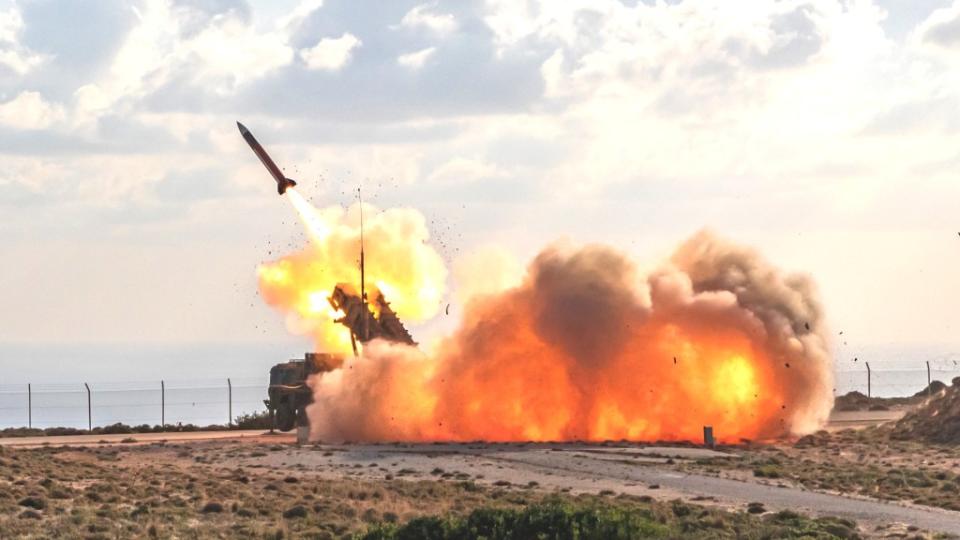
Zelensky told a press conference that he needs 25 Patriot air defense systems to defend his nation, the Ukrainian Ukrinform news outlet reported. However, he declined to say how many Ukraine already has.
“I believe that at this NATO summit, Ukraine got the maximum it could get. Of course, I would like to have 25 Patriot systems. But this is not a matter for NATO. Because among all NATO members, the U.S. gives consent, and the Europeans give us as many [air defense systems] as they can. There are still a couple of countries that could give us additional systems. I just don’t want to talk about something when there is no final solution. But it is impossible to completely close the need for air defense without the United States, because the necessary number of systems is only there,” he said.
On July 11, the Biden administration announced it was providing Ukraine with a new Patriot system from existing stocks. That was the second Patriot battery the U.S. will provide. You can read more about the challenge of providing enough Patriots for U.S. troops around the globe as well as for allies in our deep dive here.
We need 25 Patriot systems to completely protect Ukraine, Zelensky says. pic.twitter.com/zxAKNgttvv
— Clash Report (@clashreport) July 15, 2024
The Deputy Head of the Office of the President of Ukraine told Voice of America that his nation did not turn down an offer by Sweden to provide JAS 39 Gripen fighters.
Ihor Zhovkva dismissed the notion that Ukraine opted against obtaining the Swedish-made JAS 39 Gripen fighter jets so that Ukrainian troops train on the F-16s faster. The negotiations for the Gripens, he stressed, are ongoing.
“I have never heard that Ukrainians rejected the Gripen fighter jets,” he told the publication. “The other way round, this is the topic my president always brings up during the talks with the Swedish leadership.”
Zhovkva added that this dialogue was ongoing even before Sweden joined NATO when it was not ready to make any promises.
With Sweden now in the alliance, “my president is talking to the Prime Minister of Sweden again, and our Defense Ministry [communicates] with corresponding Swedish bodies,” Zhovkva stated. “These fighter jets are as good as the F-16s. So we are moving in this direction.”
Zhovkva was reacting to statements made last week by Sweden’s Foreign Minister, who said Ukraine rejected the Gripens because it was difficult to fly and sustain those along with F-16 Vipers that are on the way.
“We must understand that Ukraine was given the opportunity to receive F-16 fighters, of which, of course, there are more in the NATO family,” Tobias Billstrom told Voice of America last week. “After all, more countries have F-16s than Gripen fighters. This has nothing to do with the Swedish government’s decision. Such a decision was made due to the fact that Ukraine came to the conclusion that having two fighter systems at the same time – both F-16 and Gripen – is too much.”
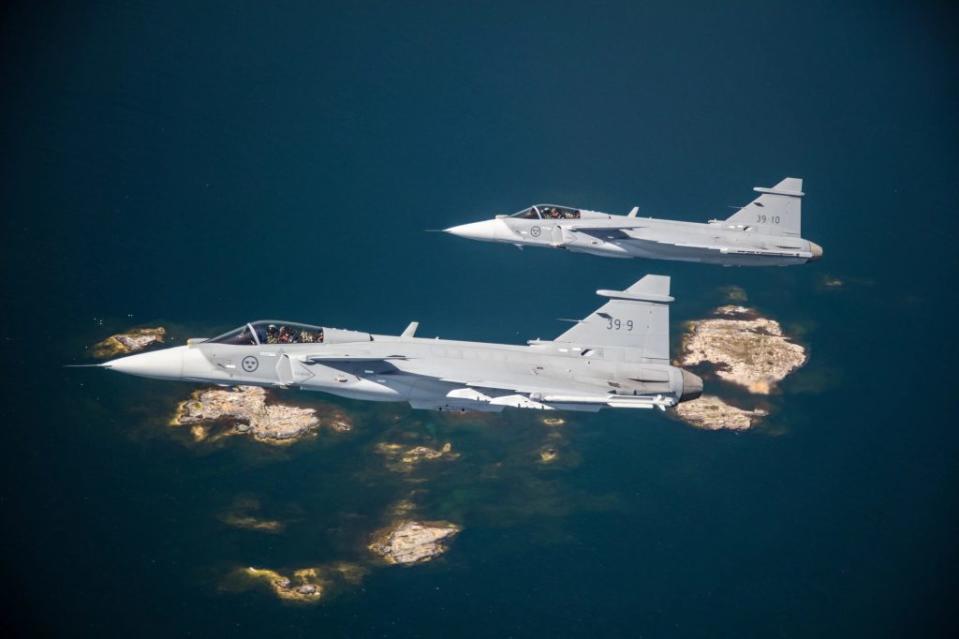
The Russian FORES oil company is offering a 15 million rubles ($169,590) reward for the first destruction of a Western-supplied F-16 in Ukraine, according to the Russian Ministry of Defense.
This is not the first time the company has offered such a bounty, according to Euromaidan Press. “Last year, the company promised 5 million rubles ($56,561) for the first destroyed Leopard or Abrams tank, 2 million ($22,624) for the second, and 500,000 rubles ($5,656) for subsequent ones,” the publication reported.
#BREAKING Russian MoD says the military personnel who are the first to shoot down American F-15 and F-16 fighter jets will receive 15 million rubles ($169,873). pic.twitter.com/897HLbfuwn
— Clash Report (@clashreport) July 16, 2024
Ukraine is working to develop a jet drone interceptor.
Tests are underway for the drone, dubbed “Bullet,” according to the Ukrainian Military Journal Telegram channel.
“It’s designed to intercept drones, helicopters, etc.,” the channel stated. “It is reported that the drone gains speed up to 130 km/h (about 81 mph). “The price of the complex of five UAVs and a ground station is almost $145,000. This is not the first attempt of Ukraine to create a jet drone, but so far there has been no mass use of them.”
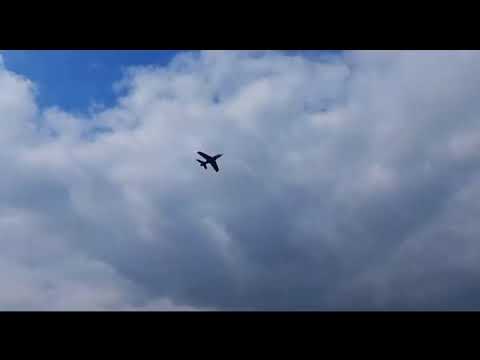
Russia is using a whopping 1,300 First-Person View (FPV) drones per day, but Ukraine is using even more, the Ukrainian RBC news outlet reported citing a source on the Ukrainian Armed Forces General Staff.
RBC did not provide a figure for how many Ukrainians are using.
The news outlet also reported that Ukraine is closing its artillery ammunition gap with Russia.
“According to the source, while previously the Russians used about 70,000 rounds of ammunition, and Ukraine used 10,000, now the Ukrainian defenders use 15,000, and the Russian forces use 45,000,” RBC stated, without providing a period for that use.
The ratio has improved since the beginning of the year.
“Back in late June, RBC-Ukraine’s source in the General Staff said that the ratio of artillery use between Ukraine and Russia had dropped to 1:3. At the beginning of the year, it was 1:7.”
The ammunition gap news came as Ukraine began receiving ammunition under the Czech initiative, the publication reported. So far, 50,000 units have been delivered, Ukrainian Prime Minister Denys Shmyhal said Tuesday.
"Back in late June, RBC-Ukraine's source in the General Staff said that the ratio of artillery use [fire rate] between Ukraine and Russia had dropped to 1:3. At the beginning of the year, it was 1:7."https://t.co/qYquxZseP5 pic.twitter.com/8ffWYtHCQd
— Rob Lee (@RALee85) July 16, 2024
A crowd-funded effort in Ukraine has resulted in the development of what is being touted as the nation’s largest FPV drone. Dubbed the “Queen Hornet,” it is “a multifunctional platform: bomber, kamikaze, transport drone, remote mining of logistic routes, carrier of kamikaze drones, and carrier of relay stations,” according to Wild Hornets, which makes combat drones.
The 15-inch Queen Hornet has a takeoff weight of 18 kilograms (about 40 pounds) and a payload capacity of up to 9.5 kilograms (about 21 pounds), Wild Hornest states.
“Despite its impressive dimensions, it retains maneuverability and all the advantages of FPV racing. Recent drones are composed of 65% Ukrainian components. The drone was developed and tested by our engineers, and now dozens of these drones perform hundreds of combat missions on the phone lines every day,” Wild Hornets stated “We have just as many on the conveyor. Each month, the number of these drones will increase.”
How We Created the Largest Ukrainian FPV Drone
At the beginning of 2024, the commander of the K-2 battalion, Kyrylo Veres, asked us to create an affordable FPV bomber that would carry up to six kilograms of payload and cost the same as a few regular kamikaze drones.
We set… pic.twitter.com/ID72XzLtJS— Wild hornets (@wilendhornets) July 16, 2024
It’s one thing to have an FPV drone, but they need to be armed to have an effect. One Ukrainian unit is taking captured Russian munitions and working to fit them onto FPV drones, to send back to Russia “with our love,” as one soldier stated.
Whoever brings the sword, will fall by the sword!
Ukrainian drones are successfully sending russian munition back to destroy occupiers.: @United24mediapic.twitter.com/CgLQ4rUf3W
— Defense of Ukraine (@DefenceU) July 17, 2024
Ukrainian FPV drone operators recently forgot an important aspect of operations that cost them dearly.
The Russians recently intercepted video from a Ukrainian FPV drone during takeoff and “found our Ukrainian pilots and attacked with several FPVs,” said Ukrainian electronic warfare expert Serhii Flash on his Telegram channel. “Now at the front, a [Ukrainian] FPV crew is a target more important than 10 howitzers.”
“Why did this happen?” Flash asked rhetorically. “There is no longer a pilot who does not know that it is necessary to take off at a low power of the video transmitter so that the enemy does not intercept the picture. But there are those who forget to do this, and there are cases of interception of low-power transmitters from the air.”
“There will be no advice here,” Flash added. “The enemy has the same problem as us. Who needs to hear me, consider and decide what to do. FPV crews take care.”
The video below from the Russian Sudoplatov Battalion shows several FPV drones hitting what is claimed to be the Ukrainian FPV drone launch point.
Video from the Russian Sudoplatov battalion showing FPV strikes on a claimed Ukrainian FPV position. They located the position by intercepting the video feed during the launch of the FPV. Serhii Flash says that it is important to keep the video signal on low power during the… pic.twitter.com/S4movxJMIq
— Rob Lee (@RALee85) July 15, 2024
Not surprisingly, Russia has followed Ukraine’s lead in using the light, fast, and maneuverable FPV drones to attack slower-moving enemy drones.
An FPV drone operated by Russian paratroopers recently downed a Ukrainian Baba Yaga-type attack hexacopter, the Russian Poddubny Telegram channel wrote. “The air battle took place in the skies over Razdolovka,” Donetsk Oblast.
The following video shows that the “UAV operator of the Tula Airborne Forces literally saved our positions from an attack by a Ukrainian hexacopter,” Poddubny claimed. “The paratrooper quickly decided to attack the enemy hexacopter with an FPV drone in order to shoot it down: he rammed the Ukrainian Armed Forces drone, after which it exploded in the air.”
“The maneuverability of an FPV drone allows the operator to quickly navigate in space and attack not only static objects, but also pursue targets moving at high speed,” he concluded.
In the video, you can see the Russian FPV drone close in on and eventually ram the much larger, slower-moving Baba Yaga.
More FPVs are used to hunt down slower-flying heavy multirotor drones. https://t.co/rpd5Ozdztz pic.twitter.com/dWY9OBfGBj
— Samuel Bendett (@sambendett) July 15, 2024
A new stage in drone-on-drone warfare was achieved by Russia. In the video below, you can watch a Russian drone knock out a Ukrainian drone with…a water bottle.
Russian drone shot down Ukrainian drone by dropping a water bottle. pic.twitter.com/kwbqUiT6OQ
— Clash Report (@clashreport) July 16, 2024
Ukraine too has deployed a unique anti-drone weapon. In this case a fisherman tossed one of his fish at the Russian drone. The fish, however, appeared to be less effective than the Russian water bottle. It knocked the drone off course, but the drone kept following the two men in the boat. It is unclear what happened next.
Kherson fishermen were not impressed and threw a fish at a Russian drone that was watching their boat. pic.twitter.com/rvhk3X1jvv
— NOELREPORTS
(@NOELreports) July 12, 2024
Try as they might, the Russians can’t avoid FPV drones at night. The following video shows an FPV drone from the Ukrainian 63rd Mechanized Brigade attacking a Russian supply vehicle.
This is not just another russian Scooby-Doo vehicle destroyed by our drones. The forces of units of the 63rd Mechanized Brigade cut off the routes for the supply of ammunition, fuel and lubricants, food and water. Now the occupiers deliver everything to their positions only at… pic.twitter.com/tNEkGjyA3Y
— ✙ Albina Fella ✙
(@albafella1) July 17, 2024
The Russian crew of this Chinese all-terrain vehicle did not fare well against an FPV drone. Video from the attacking drone showed it buzzing toward the ATV as the Russians raised their hands in a fruitless effort to protect themselves. Another drone captured the explosive aftermath of that encounter.
Say cheese
— PS01 (@PStyle0ne1) July 16, 2024
Ukrainian FPV operators wanted to make sure the Russian soldier in this video below was sincerely dead. So they launched four FPV drones to take him out. The first one appeared to have blown up in front of him, but he kept running. The next two, striking in rapid succession, seemed to have completed the mission. Still, there was another strike in front of where those landed.
Four Ukrainian FPV drones simultaneously attack Russian soldier. pic.twitter.com/hDzKyLlfuh
— Clash Report (@clashreport) July 12, 2024
With FPV drones such an ever-present battlefield danger, Ukraine is testing a 3-D printing pistol that fires not bullets, but an aluminum net. The weapon, which fires a four-sided net, is seen as a last resort against an approaching FPV drone.
Ukraine is showing increasing interest in anti-drone net systems.
A printed pistol and aluminum net launcher is being developed as a weapon of last resort against Russian FPV drones. https://t.co/LNPkXk44hz pic.twitter.com/wfgDL25VL3— Roy
(@GrandpaRoy2) July 16, 2024
Ukraine is seeking revenge with a U.S.-provided GBU-39 Small Diameter Bomb (SDB) glide weapon. Slung under the wing of a Ukrainian Air Force MiG-29, it is inscribed with a message to Russia.
“For Okhmadyt,” it reads, a reference to the children’s hospital in Kyiv hit by Russian Kh-101 air-launched cruise missiles on July 8. It was part of a massive barrage that killed more than 40 and wounded nearly 200 across the nation.
US-supplied GBU-39 SDB glide bomb sitting under the wing of a Ukrainian Air Force MiG-29 Fulcrum, bearing the inscription “for Okhmatdyt [children’s hospital]” pic.twitter.com/VRO543Pwzx
— OSINTtechnical (@Osinttechnical) July 12, 2024
This video shows a claimed U.S.-produced Army Tactical Missile System (ATACMS) short-range ballistic missile strike on a Russian S-300 air defense battery outside of Manhush, Donetsk Oblast. You can see the missiles falling, then releasing numerous submunitions, which explode all around the system. Multiple components appear to have been struck.
Footage of multiple Ukrainian ATACMS tactical ballistic missiles slamming into a Russian S-300 battery last night outside of Manhush, Donetsk Oblast, over 50 miles behind the front.
Multiple elements of the battery appear to have been hit, including the radar. pic.twitter.com/XLbLOuCuo1— OSINTtechnical (@Osinttechnical) July 16, 2024
Hunted down by Russian drones and artillery, self-propelled guns like the Ukrainian AHS Krab howitzer in the video below reportedly don’t so much shoot and scoot as they do duck and hide after firing off some rounds.
The weapons fire off some ammunition, then return to a camouflaged and protected position. It is unclear from the video just how well the Krab would be protected given that it is only covered by netting. It is possible, however, that there is a better-protected shelter that cannot be seen.
Self-propelled guns like this Ukrainian AHS Krab do not “shoot and scoot”, as that much time in the open would be fatal due to ubiquitous recce drones and FPVs.
Instead they stay in a camouflaged, protected position, emerge briefly to fire, and then return quick as a bunny. pic.twitter.com/K39MwIkx1H— Roy
(@GrandpaRoy2) July 13, 2024
The latest iteration of a turtle tank has appeared on the battlefield in the form of this monstrosity below. Unlike other versions, this one has a rectangular metal box attached only to the turret while allowing full motion of its main gun. There is also an added position for a machine gunner up top.
The fully enclosed sheds I can sort of understand but what the hell is this lmao pic.twitter.com/RnTMheXsYO
— ConeOfArc (@ConeOfArc) July 14, 2024
The beaver is back.
A Ukrainian MiG-29 Fulcrum fighter that was reactivated into service after Russia’s full-on invasion is sporting new Angry Beaver nose art.
A UkrAF MiG-29 that was re-activated (returned to service) after the full-scale invasion began https://t.co/x94m3WPEZS
— Alex (@magictouch190) July 15, 2024
Noted Russian blogger Anastasia Kashevarova took to Telegram to complain about continuous Ukrainian attacks on the Russian city of Belgorod. Among the issues she protested was the inability of Russia to protect those residents.
“Everyone owes the state, the state owes nothing to anyone,” Kashevarova griped. “We help Afghans, Palestinians, Tajiks, but we cannot ensure the safety and well-being of the citizens of our own country. Residents of the front-line areas of the Belgorod region found themselves hostage to a situation that the regional and federal authorities have not resolved for years.”
Thousand of residents of Shebekino, Grayvoron, and other areas “cannot leave their homes,” she added. “Nowhere. Queue at the temporary detention center. Not all temporary accommodation centers can accommodate large families; there is no well-thought-out evacuation. For example, during the long period of shelling and deaths of Russian citizens, they were unable to rebuild any normal houses into which large families could move. Chechnya rebuilt for the Palestinians, but Belgorod for its own could not.”
Russian volunteer Kashevarova complains that the unfortunate residents of Belgorod are suffering from the war, but the state is doing nothing for them. She says that even those drivers who are trying to get away from drones are fined for speeding
Taxes have not changed, and… pic.twitter.com/q6gWNxgJYY
— WarTranslated (Dmitri) (@wartranslated) July 16, 2024
Despite the ongoing bloodshed, prisoner exchanges continue, this time thanks to mediation by the United Arab Emirates (UAE).
“We continue to bring our people home,” Zelensky said on Twitter. “Another 95 defenders have been freed from Russian captivity. These are warriors of the Armed Forces of Ukraine, the National Guard, and the border guards. I am grateful to our team responsible for the exchanges and to the United Arab Emirates for mediating this release. No matter how difficult it is, we search for everyone who might be in captivity, and we must bring them all back.”
We continue to bring our people home. Another 95 defenders have been freed from Russian captivity. These are warriors of the Armed Forces of Ukraine, the National Guard, and the border guards.
I am grateful to our team responsible for the exchanges and to the United Arab… pic.twitter.com/ozVW5wQ1Ie— Volodymyr Zelenskyy / Володимир Зеленський (@ZelenskyyUa) July 17, 2024
Add the Kharkiv Oblast city of Vovchansk to the list of Ukrainian cities destroyed by this war, as this video below starkly shows.
Incredibly raw drone footage from the Ukrainian city of Vovchansk, invaded by Russian forces this spring.
The city, once home to over 17,000, has been effectively flattened, with the shattered remains of apartment blocks now occupying the skyline. pic.twitter.com/dmh4DIVJw5— OSINTtechnical (@Osinttechnical) July 16, 2024
A resident of the Ukrainian city of Myrnohrad is very lucky she had a prescient cat.
During the search of a building struck during a Russian attack, emergency workers heard a plaintive meow amid the dust and rubble, according to SESU.
“They freed a frightened cat from the trap, which had been under the rubble for almost a day. Fortunately, the animal was unharmed,” SESU said.
The rescuers then handed over the kitten to its owner, who said that “a few minutes before the shelling, her pet started meowing loudly and persistently calling her to the room, which was not damaged as a result of the shelling. This is how the furry pet saved the life of his owner.”
Instead of a thousand words.
A few moments before a Russian strike on Myrnohrad, a cat started meowing like crazy and calling his human to go into another room. She listened, and that saved both of their lives.: SESU pic.twitter.com/6BbJFdhOV1
— Anton Gerashchenko (@Gerashchenko_en) July 17, 2024
And finally, a Ukrainian police unit in Rivne found a new member for its “small aviation” unit – a friendly stork that frequently visits officers on duty.
In Rivne, a stork approached a police checkpoint for water.
It regularly visits the officers on duty, so they made it an honorary member of their “small aviation” unit, wrote Oleksiy Biloshitsky, Deputy Head of the Patrol Police on his Facebook page.
pic.twitter.com/ZO6jI39bIB— UNITED24 Media (@United24media) July 15, 2024
That’s it for now.
Contact the author: howard@thewarzone.com






















